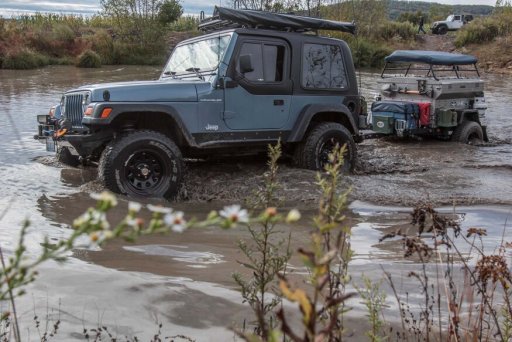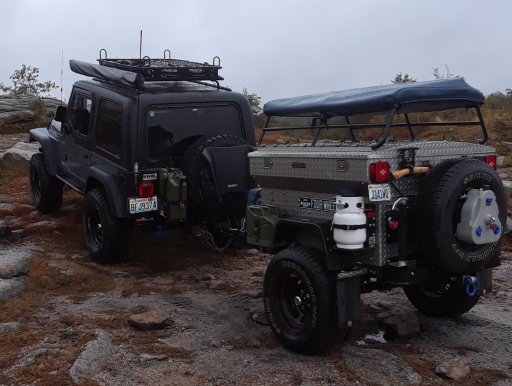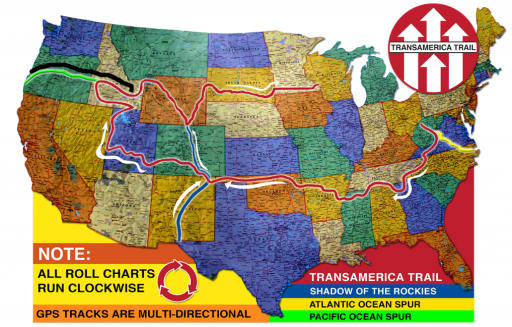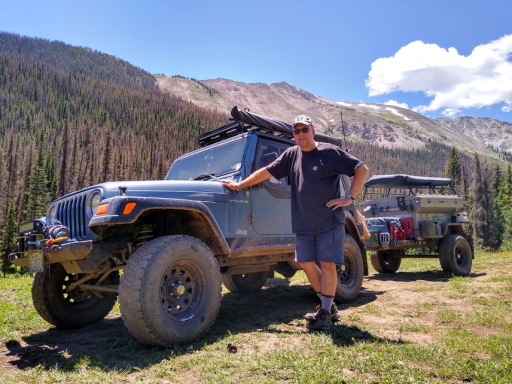Rules, requirements, & recommendations… I like to put them out up front so there’s no questions about what’s expected of folks; what’s ok & what’s not ok, etc. People don’t like surprises at the last minute – and I don’t want anyone to have hurt feelings before we even get started on day one. I don't mean to sound harsh, but if you can’t go along with these (and I mean
all of these), then please don’t sign-up. Don't sign-up thinking you're an exception to the rules ("guidelines"), or requirements don't apply to you, or you can "pick-and-choose" among them.
Please check back-in on this thread if you registered for any updates, especially as we get closer to the departure date on 28 July 2022. If you're signing-up later in the game (totally cool!) please make sure you read through the whole thread start-to-finish for any important information that might be posted in there somewhere.
Vehicle Requirements & Expectations:
Vehicles should be in good working order, with 4WD or AWD and decent ground clearance. We will be driving hundreds if not thousands of miles over 1-3 weeks, and much of it is off pavement (figure rocks, mud, and maybe some water crossings in places). That means cooling system is working well and not leaking, hoses are good, ignition is running strong, battery & wiring are well secured, fluids are relatively fresh, brakes are in good working condition, U-Joints are good, etc.; and any known issues have been fixed
before the meet-up day. This should be for any Overlanding trip you're planning on participating with, not just this one.
Tires should have plenty of tread on them and be in a good safe condition - preferably not street tires but instead AT or MT tires. All vehicles
must have a
full matching size, mounted matching size spare tire with adequate tread on a matching sized rim (no temporary spares even if they are of a matching size). Plug kits are great (I've got one), but they only go so far, and are not a substitute for a full-size, matching spare tire and rim. So if you’re buying larger tires for your vehicle, you need five of them (four plus one for the matching-sized spare tire).
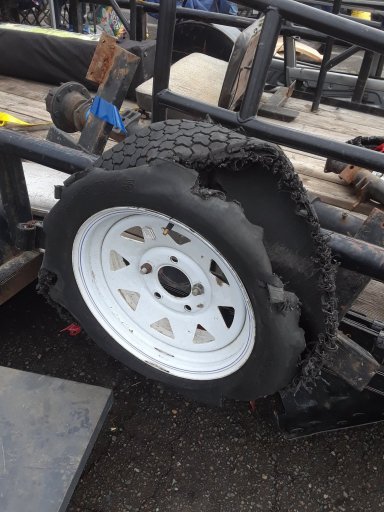
Ouch. It happens. Glad this time it wasn't me. A plug kit isn't going to fix this one above. They were glad they had a spare so they could swap it out and keep going.
Vehicles must have strong tow-points or recovery points (like tow hooks or D-rings)
front & rear (a 2" receiver also counts as a tow-point - and they do sell front mounted hitches with 2" receivers for some vehicles - check out e-trailer as a starting point). Those bent wire-looking hoop things welded under some vehicles used to tie them down from the factory for transport are
not tow-points or recovery points. Even the best set-up overland vehicle sometimes needs to give or receive a little tug to get over/through an obstacle - there's no shame in needing a tug sometimes. Using a trailer hitch tow ball as a tow-strap attachment point is dangerous - preferred (and simplest) is a D-ring attached to a 2" receiver bracket (
not the one from Harbor Freight). Soft shackles are also becoming popular. I think most newer vehicles commonly used for overlanding nowadays have tow hooks up front (one up front is sufficient if that's all you can do up front) and a 2” receiver in the rear either as standard equipment or as a factory option. If not, you may have to go aftermarket or custom. Make sure the attachment point is secure and not just for looks.
Each vehicle must have a tow strap or recovery strap (not a chain) of some kind strong enough for the weight of their vehicle. Straps must have fabric loops at the ends, not metal hooks (metal hooks are dangerous).
Must have a jack capable of lifting your vehicle to change a tire (does
not have to be a high-lift jack). It can be your factory jack. If you’ve lifted your vehicle and installed taller tires, check to see if the jack you have will still go tall enough to lift your tires.
Need to have a spare fan belt(s) for your engine. We can repair a busted radiator hose on the trail; There’s all sorts of crazy things we can do to get you off the trail, but we can't tape together a busted fan belt. Belts are cheap and don’t take up much space; pick one up at any parts store. Worst case scenario buy one at the dealership (or order from Rock Auto online). If you've got a belt that's been on there for a while, maybe put on a new belt and save the old one as your spare. I keep my old one zip-tied under the hood.
If there is something that frequently breaks on your vehicle, or is a hard-to-find item, bring a spare. If your vehicle requires a special kind of headlight bulb (like mine), bring a spare or two. If repairing your vehicle requires a specialty tool (I’m thinking like a large specific-sized socket for removing a front hub) consider purchasing one and having it with you with your tool kit.
Need to have a way to air-down and air-up tires (I just use the backside of my tire pressure gauge to deflate). If you're looking at an air compressor that just plugs into a cigarette lighter, it isn’t strong enough or adequate for trail use - it should either be hardwired into your vehicle, or use clips to the battery post. Ask us for recommendations if you're not sure. CO2 tanks are great (very fast & quiet) until you run out of CO2 (ask me how I know).
Need a GMRS radio (
and a license to go with it). Ask me/us if you have questions about specific GMRS radio options.
We are using GMRS and not CB.
Link:
Why Do I Need a GMRS License & How Do I Get It? | Midland Radio (midlandusa.com)
Vehicle must be capable of traveling
at least 150 miles (preferably more) using the gasoline you're carrying. Figure we'll be driving relatively slow and not on pavement; you will not be getting anywhere near your normal highway MPG. Plan accordingly - Jerry cans are your friend. When we stop for gas,
everyone (that means "
everyone") fills-up
or tops-off (sometimes we might have to take an unexpected long detour, or a gas station in the middle of nowhere we thought would be open might be closed, etc.)
.
If you're planning on bringing a trailer, think small(er). WWII military-type trailer sized, or a fairly small teardrop-type or expedition trailers are your best bet (best if trailer's track width is no wider and roof no taller than the vehicle towing it). Either way, trailers need to have a good, rugged suspension and high clearance underneath, and off-road-ish tires ("LT" series tires preferred at least) with good tread, AND...
all trailers must have a matching spare tire.
If your trailer is running the same size wheel & tire and bolt-pattern as your tow vehicle's full-size matching spare tire, that's fine. But if not, the trailer must have its
own dedicated matching mounted spare wheel and tire. FWIW, my lil' trailer shown below has its own matching spare (mounted on the back of the trailer's tub) as it doesn't match any of my other vehicle's tires. Yeah - those are glamor shots.
